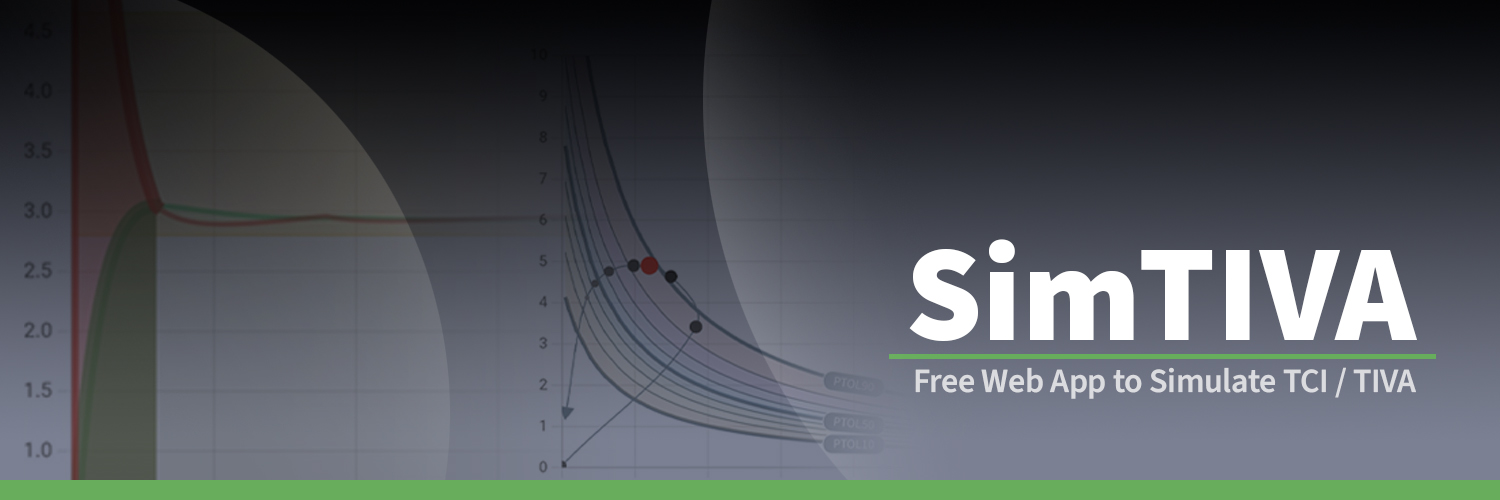RSI and TIVA
I have decided to share a few thoughts regarding this topic (TIVA RSI) since it has gathered much interest (and debate) on social media platforms (see here, here and here). The topic is interesting because the name is actually a misnomer (all RSI is TIVA, no doubt), and also there is a wide range of practice among anaesthetists: induction bolus - delivered by pump (yes/no), use of TCI pump (yes/no), use of opioid - specifically remifentanil TCI (yes/no/other opioid use), choice of NMB agent, so the possibilities of different combinations of practice are endless.
I do not wish to diverge too much on the myriad of definitions and scenarios; as this has been covered elsewhere, but what concerns me the most is this question: is it appropriate to deliver the induction bolus of propofol with a syringe pump? In other words, can the syringe pump deliver the bolus fast enough to achieve the purpose of RSI - to induce rapidly?
SimTIVA, a free web simulator for TCI/TIVA, tries to answer this question. All the simulations and illustrations in this blog post are generated by SimTIVA. To start off, let's do a thought experiment.
We are inducing a 35yo, 80kg 180cm man and we wish to perform an RSI. By this, we aim to achieve a target CE at a specific time, let's define it to be 60s. For example, we wish to achieve an Eleveld model predicted CE of 3mcg/ml at 60s. Would you... (limit it to the following options):
(1) induce with a hand bolus, assuming a bolus speed of 2ml/sec (7200ml/h)
(2) use a pump to deliver the bolus with rate of 1500ml/h
(3) use a pump to deliver the bolus with rate of 1200ml/h
The first option uses a somewhat "slow" hand bolus rate arbitrarily but it is impossible to know the exact speed of a hand bolus, so we settle at 7200ml/h. The second and third options are some of the more common max pump rates available on the syringe pumps. I believe very few pumps can go beyond max rate of 1500ml/h. Also, we understand that trying to achieve a CE target in the shortest possible time (say 60s) will inevitably lead to a subsequent higher peak CE (a CE overshoot).
The thought experiment goes like this. What do you think your bolus amount is going to be? What is the final overshoot - is it 5, 6, or 7mcg/ml CE? Do you think your choice can achieve CET of 3mcg/ml in 60s?
The answer is revealed:
Choice | Bolus amt/ | Final peak
| Time to |
| deliver bolus |
-------------------------------------------------
Manual | 220mg (11s) | 5.03mcg/ml at 3m11s
1500ml/h | 308mg (1m 14s) | 6.52mcg/ml at 3m46s
1200ml/h | 283mg (1m 25s) | 5.97mcg/ml at 3m52s
(On mobile device, rotate your screen or pinch-zoom to magnify the image)
From the simulations, my conclusion is that a manual hand bolus is a much more appropriate way of injecting a bolus in RSI (220mg fast manual bolus push). The other two options, while possible, CANNOT achieve the desired CET value at the specific time point of 60s (requiring more than 1 minute just to deliver the bolus), eventually achieving the CET value of 3mcg/ml at 1m14s and 1m25s respectively. Do you think that it is appropriate to achieve CET of 3mcg/ml at more than 1 minute's time for RSI?
We have to understand the pharmacokinetics. If the pump cannot deliver the bolus "fast enough", the consequence is that whilst you are pushing drugs IN, the drug is being quickly redistributed OUT of the central compartment and hindering the speed of rise of CE (which is essentially what you wish to achieve in RSI - induce as quickly as possible; or achieve a CE target as quickly as possible). It is counter-intuitive to choose a slower injection speed when you can inject by hand.
You may try performing these simulations in SimTIVA. The RSI mode is available, after you have selected initial patient characteristics, then choose CE targeting - in that second screen you may click on "RSI mode". You will have an entry of CE target, a choice of 3 induction speeds (manual, 1500, 1200) and two specified time points to achieve this target (60s or 90s). The induction technique, subsequent pause time and maintenance scheme will be shown and the graph will be a live preview of the simulation scenario using the parameters you have specified.


Comments
Post a Comment